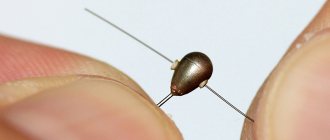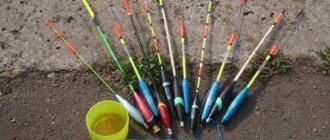A highly specialized maritime unit, widely used in the fleet. This unit got its name from the special ship’s gear “sheets”, with the help of which the sail is controlled. Depending on the type and purpose of the sail, each sheet has its own characteristics and name.
It became widespread in the 15th century, when new, progressive at that time, sailing systems began to appear. Its function is to fix the sheet in the wing of the sail.
Application of the clew
The clew knot is quite practical, as it is very easy to tie and, with large tensions, does not damage the rope or cable.
The main feature of such a knot is that it is effective only if there is tension on the rope that is attached to the sheet; otherwise, it will simply come undone.
This type of knot looks a little like a straight knot, but in fact these two knots differ in the way they are tied. This knot is perfect for attaching a ship's cable or rope to an already tied strong loop. It is not used for synthetic-based cables, since in this case the running end of the unit will simply slide off.
The unit is also actively used on ships with sailing systems. Its peculiarity is that it is actually highly specialized and was invented specifically for securing sheets to sails. This is the essence of it. Such a knot does not have its own pedigree of maritime knots, and is used exclusively for its intended purpose. In other applications, the clew knot usually replaces the straight or bayonet knots. You can also find it in everyday life under the name of a weaving knot.
Docking knots for tying disconnected ropes
Straight/Reef
A straight line connects two cables of the same diameter. Disadvantage: when wet and with increased tension, it tightens tightly. To avoid this, a wooden wedge is inserted into the hinges. Straight double connects two cables of the same diameter and can withstand high tension loads. Reef secures deck mechanisms, rods, covers for boats, and also when a reliable but quickly distributed bundle is needed.
Clew and Bramsheet knots
Traditionally used for connecting two ends of different thicknesses, but in practice it is also suitable for cables of equal thickness. Not recommended for use on synthetics. It holds up well when loading is applied. Bramshkotovy differs from clew only in one additional turn. The bramble knot is located in the last picture of the gallery.
Tying a clew knot
It must be knitted to a ready-made loop of cable, rope, or chain. It can also be tied to a metal ring or carabiner.
- To begin, take a rope with one free end;
- We pull it by the end through the finished loop, wrapping its base once;
- Now we pull this end back into the loop, but below the base of the rope;
- We tighten the end into the hole between the base of the rope and the inside of the side of the finished loop;
- We tighten the knot by fixing the free end and tensioning it along the base of the rope;
The diagram below will help you figure out how to knit this knot:
It is necessary to take into account the fact that this type of knot is not recommended for use on cables or ropes with synthetic fiber, and also that such a knot is effective only in the case of constant (in no case variable) tension on the rope or cable.
MARINE Knots for special purposes
Bowline
The gazebo knot or bowline is called the royal knot. Acts as a safety or rescue bandage on the body of a person on the mast or overboard; since it is a non-tightening loop. A double gazebo is woven in the same way as a regular gazebo, only with a rope folded into a widow.
Figure eight locking knot
The figure eight stops the gear folded in a pile. The free (running) end is placed on top of the fixed (root) end, brought under it and up again, tucked into the loop formed at the beginning of the work. Contracts under load.
Clove hitch
The bleached one is used to attach sheets to objects with a smooth surface, and is used when a tightening knot is needed.
Retractable bayonet
The retractable bayonet distributes the load on the rope shoulders. Start of weaving: 2 loops around the active end of the rope. After the first turn, a second one is made, overlapping the fixed edge of the first turn. The third is made with a slight indentation from the first two, after which the free end is passed around the wrapped rope in the opposite direction so that the third turn is tightly clamped when tightened. The first two turns are working, the third one fixes them. The disadvantage of a sliding bayonet is that it tightens when the rope is loaded.
Double clew
Only the double knot managed to outshine the clew knot. It is the most durable, and it is almost as easy to knit and untie.
A double knot is used when safety is considered the main condition: when towing, when tying a thin and very thick rope, and even when a larger cable is very hard and only a straight loop can be made from it.
You need to knit it in the following sequence:
- You need to fold the open loop of the thick cable.
- Pass a small rope through the loop of a thicker rope from the side of its running end.
- Loop a small rope behind the thick loop, without tension. Pass the thin rope underneath you over the thick one.
- Once again, loop the small rope behind the thicker loop and pass it under you again, next to the original passage.
- Align the knot by pulling on the main end of the thin rope to tighten it, while holding the loop of the thick rope, eventually the small rope will compress itself. You also need to pull the running end of the rope to align both turns.
Where is the knot used?
The main use of a knot is to effectively connect two ropes that have a marked difference in diameter or stiffness. Its main purpose is to create additional strength when tying two ropes.
As mentioned above, this knot was and is often used in our time on ships and sailing ships to secure cables and ropes, as well as in rigging work. To be more precise, the mainsheet knot is involved in the field of tying and connecting sails and cables.
In addition, its use can also be found in mountaineering, for example, to create additional insurance when it is necessary to replace a thin rope with a thicker and stronger one, as well as for tying two ropes.
We cannot say with certainty that it will be useful in fishing or hunting directly, but why not remember it under any other conditions. In any case, this node is also a tourist one and will be useful to you in a survival situation in the forest or on a pond.
Windlass knot
This is another name for a double clew. Just like the clew knot, it got its name from the name of the gear - the topsheet, which is used to stretch the clew knots of the lower edge of a straight sail when installing the topsails. A clew knot is more practical than a clew knot, since it does not instantly untie when it is pulled on the rope. It differs from a clew knot in that the loop is wrapped with the running end not once, but a couple of times, and the end of the rope is also passed 2 times. During the period of the sailing fleet, the brass knot was widely used in tying gear. This knot is also practical for tying ropes of various diameters. It holds perfectly on artificial ropes of the same thickness. Check points are a must!
How to knit a Bramlin knot?
- You need to take 2 cables of different diameters.
- Make a loop from the thickest cable, and twist it with the free end of the thin one in the same way as shown in the picture below.
- Then the knot should be tightened, straightened and safety knots tied at both ends.
Advantages of Brahmsheet Knot
- strong knots, easy to knit;
- They do not tighten under tension.
Disadvantage – they “creep” with variable tension.
Knots for tying ribbons and ropes
Used for tying ribbons and ropes, both of the same diameter and of different diameters.
In the first case, the following is most often used:
- direct (sea);
- grapevine;
- clew;
- weaving.
In the second:
- counter;
- bramshkot;
- academic.
Straight knot
The straight knot is very simple to perform: both ends of the rope are parallel on one side.
Its main disadvantage is spontaneous “sliding”, i.e. tendency to unravel on its own.
In this regard, for additional strength, its ends are strengthened with control safety knots (“controls”), although in everyday life this is most often not necessary. These “controls”, under extreme loads on the rope, will prevent it from slipping and untying the main knot.
Step-by-step instructions on how to tie a straight knot
Grapevine
The grapevine knot is considered reliable and beautiful. It is used not only for tying ribbons and ropes, but also for knitting loops for bookmarks and pull loops.
It is extremely practical when tying a lanyard loop.
The advantage of this unit is the ability to adjust the length of the loop.
Under the influence of load, it can tighten greatly.
This knot is even used for tying fishing line.
Step-by-step instructions for tying a grapevine knot
Counter knot
The counter knot is ideal if you need to tie completely different materials, for example, a ribbon with a rope, a rope with a cord, etc.
Not only does it hold well and does not crawl, but it also unties easily after removing the load. At the same time, it tightens perfectly under load.
The counter knot has a second name - loop knot. In the practice of mountaineering, loops made of braid of different widths are often used. To tie them, only a counter knot is used. This is where the second name comes from.
Step-by-step instructions for knitting a counter knot
Clew knot
The clew creeps only under variable loads, but at the same time does not tighten.
This knot belongs to the category of reliable and easy to knit.
Tying “controls” is mandatory.
Step-by-step instructions for knitting a clew knot
weaving knot
The weaving knot is very simple to make, but it can tighten strongly under heavy loads and creep under variable loads.
Often used during rescue operations in the mountains while providing assistance to victims.
Step-by-step instructions for knitting a weaving knot
Windlass knot
The bramline knot can be single or double.
Excellent for tying ropes of different diameters. When performing, you need to ensure the parallel arrangement of the strands and the correctness of the knot pattern.
It is recommended to tie “controls”.
Academic node
The academic node is a relative of the direct node.
Ideal for tying ropes of different diameters.
A thick rope is used to make a loop, and a thin rope is used to wrap it around. Be sure to tie control knots for safety.
Node benefits
Comparing the mainsheet assembly with the clew assembly, you can notice quite serious differences and better advantages. Adding an extra twist around the hose prevents the rope from shifting. For maximum strength, the free ends of the rope should be at the top on the same side of the top knot.
A regular clew knot, if there is not enough load, can slip and weaken, but the front clew knot will hold firmly thanks to the additional loop.
Step-by-step instruction
It is not difficult to learn how to knit a clew knot; you just need to carefully follow the instructions. First of all, when learning, take ropes of different colors, this will make it easier to distinguish the running end from the main one. The first rope is rolled up in the shape of a drop. The running end is held in the other hand, directing it into the resulting loop.
Next, they knit a bramline knot according to the pattern, threading the running end into the middle of the loop, go around the main rope, and wrap it downwards. Another loop has formed at the top, into which you need to insert the end of the dark rope, working in the direction of the indicated arrow.
If you pull the ropes at this moment, you will get a clew knot, but we need a double and stronger clew knot. How to tie it is shown in the following instructional photo. In the direction of the arrow, you need to thread the running end into the loop again.
Only after this process is it necessary to tighten the ends tightly. The resulting knot is a clew knot. It is also called double clew. For greater safety, especially in mountaineering and rock climbing, you also need to tie safety knots.
When tying a rope from a tent to a peg or tree, they don’t really think about reliability, since there is no threat to life, but an athlete hanging over an abyss at a great height thinks about the safety of his life first of all. The knot should not crawl under variable loads, untie spontaneously, or tighten tightly. Another important point is speed and ease of use, and here the top-sheet assembly shows itself in the best possible way.









